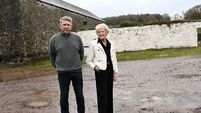Ill-fated ship was attacked by dreaded worm
The ill-fated ship’s crew applied pitch and tar to the hull to protect the vessel from the devastating effects of the shipworm species teredo navalis.
Underwater archaeologists investigating the wreck, which lies in 10m of water, are concentrating their efforts on the damage caused by the marine worm in a bid to solve the mystery of its sinking.













